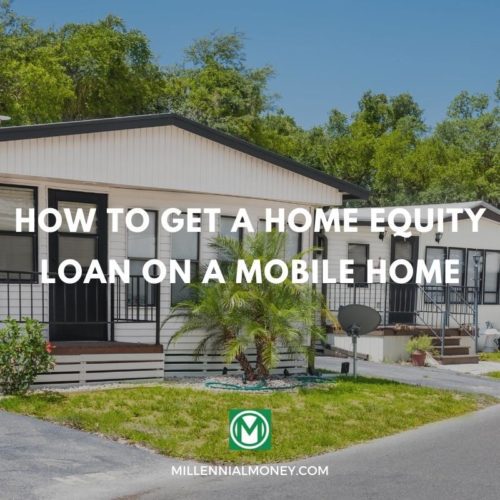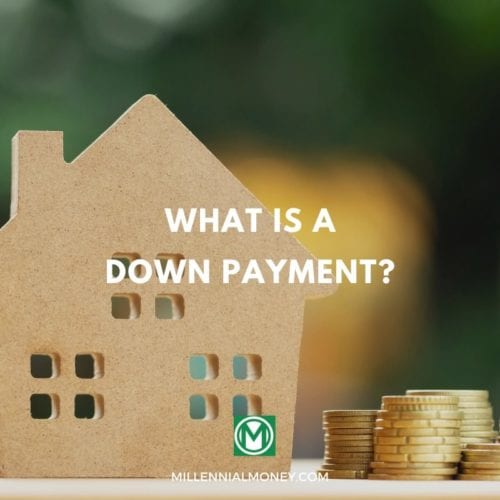Choosing a mortgage is a process you need to understand before you even complete an application. Despite efforts to streamline the application process online, mortgage loans tend to be one of the more cumbersome loan types to apply for.
But you can simplify the process – and learn how to shop for mortgage rates – by understanding how it works and what you need in order to apply to help your own cause.
How To Shop for A Mortgage in 7 Simple Steps
Here’s how to shop for a mortgage, broken down into seven actionable steps:
- Mortgage Credit Check
- Prepare Financial Documents
- Choose a Mortgage Lender
- Select a Mortgage Program
- Get a Pre-Approval
- List & Sell Your Home
- Start Shopping for a New Home
1. Check Your Credit Before Applying for a Mortgage
The process of shopping for a mortgage begins with this as a necessary first step, since both mortgage approval and pricing depend very heavily on your credit scores. The higher those scores are, the more likely you are to be approved and get the lowest interest rate on a home loan.
You owe it to yourself to do whatever is necessary to improve your credit scores, especially if you know you have some derogatory credit information.
How much do credit scores affect your mortgage interest rates?
Most mortgage lenders won’t approve your application if your credit score is below 620, though some may go as low as 580 on an FHA loan.
But even beyond approval, the impact of credit scores on mortgage rates is substantial.
According to myFICO, the company behind FICO credit scores, mortgage rates for a $300,000 30-year fixed mortgage will vary based on the following credit score ranges:
| FICO Score | APR | Monthly Payment |
|---|---|---|
| 760-850 | 3.208% | $1,299 |
| 700-759 | 3.430% | $1,335 |
| 680-699 | 3.607% | $1,365 |
| 660-679 | 3.821% | $1,401 |
| 640-659 | 4.251% | $1,476 |
| 620-639 | 4.797% | $1,573 |
As you can see above, mortgage rates can vary by more than 1.5 points from the lowest credit score range to the highest. For this reason, you owe it to yourself to do all that’s necessary to maximize your credit score.
How to improve your credit for a home loan
Most people know they’re going to buy a home well before actually taking any steps to make it happen. You should always be monitoring your credit scores regularly. But if you know you’re going to buy a home, it takes on added urgency. If your scores aren’t where you want them to be, advanced preparation will be your best friend.
Get A Free Credit Report
There are plenty of free credit score sources, including banks, credit unions, credit card issuers, and third-party providers, like Credit Sesame and Credit Karma. If you do not see the credit score you hope for, you’ll need to obtain a credit report. Mortgage lenders consider information and credit scores from all three credit bureaus.
Under federal law, you’re entitled to one free copy of your credit report from each of the three credit bureaus each year. You can do that by ordering all three through Annual Credit Report.com. It’s the only online source authorized to provide your credit report from each of the three credit bureaus.
Check Your Credit Report for Errors
Get a copy of your credit reports and examine them carefully. Look for any inaccurate or delinquent information. If anything appears to be in error, you’ll need to file disputes with either the creditors or the credit bureaus. In most cases, you’ll also need to supply documentation proving the information is incorrect. If you have any unpaid past-due balances, like collection accounts, pay them off immediately. That won’t make them disappear from your credit reports, but a paid collection is always better than an open one.
Since this process can take several weeks, it needs to be the first step in the mortgage shopping process.
2. Prepare the Required Financial Documents
You should understand from the start that applying for a mortgage is not like going to an ATM to get cash, or through the drive-up window at the Golden Arches to fetch lunch.
No matter how mortgage companies work to market an easy application process, it remains one of the more complicated financial transactions the average person experiences. This is partially because you are applying for a very large amount of money.
A mortgage represents a risk to the lender, and obtaining proper documentation is one of the ways lenders minimize risk. The other issue is that both a mortgage and a real estate transaction are legal matters. That is, each transaction is both legally recorded and legally enforceable.
How to prepare for a mortgage application
Because the process is so involved, your best strategy is advanced preparation. You can accomplish that with the following steps:
1. Assemble Your Documentation
As a rule, mortgage lenders don’t take your word for it when you complete an application. A significant financial claim on your application will need to be supported by documentation.
Expect to provide some or all of the following:
- Names, addresses, phone numbers, and account numbers for your bank accounts, brokerage accounts employers, and major loans.
- Your most recent pay stubs and W-2s covering the past two years.
- Complete and signed income tax returns if you are self-employed, have substantial investment income, rental property, commission income, or any income other than wages.
- Copies of bank statements and other financial accounts covering at least the most recent 60 days.
Depending on what’s revealed when you complete your loan application, other documentation may be required. For example, if you pay or receive child support or alimony, you may need to provide a divorce decree.
2. Prepare to Show Funds for Closing
A typical mortgage loan will require that you make a down payment equal to anywhere from 3% to 20% of the value of the property you’re purchasing. In addition to the down payment, you will have closing costs that typically represent about 2% of the purchase price. You’ll also need to prepare for escrows for taxes and insurance that may add another 1% or 2%.
For example, if you’re purchasing a $300,000 home with a 5% down payment, you’ll need $15,000 down, plus roughly $10,000 for closing costs and escrows. You’ll need to show the ability to provide $25,000 to complete the transaction.
That doesn’t mean your home buying effort will be doomed if you don’t have the entire amount.
For example, you may be able to use a gift from a family member to cover the down payment. If that will be necessary, you’ll need to have the donor lined up and fully prepared to provide documentation supporting his or her own ability to cover the gift amount. The lender will even require the donor to execute an industry-standard gift letter that will be included in your application file.
3. Lender Paid Closing Costs and Escrows
Closing costs and escrows are often paid by the property seller, as an inducement for you to buy their home. But whether or not this is possible depends on your market. In an especially strong market, sellers may not pay closing costs.
Even if they don’t, there is a Plan B. That’s what’s known as lender paid closing costs.
Here’s how it works: in exchange for a slight increase in your mortgage rate, the lender will pay your closing costs and even your escrow funds. The conversion is roughly 1% toward lender paid closing costs for each 1/8 (0.125%) increase in your mortgage rate. If your closing costs and escrows total 3% of the loan amount, you can have them paid by the lender in exchange for a 0.375% increase in your interest rate.
If you expect the lender to pay your closing costs and escrows, that’s something you’ll need to discuss with your lender at the time of application.
4. Save Before You Apply
The point is, you will need to come up with funds for closing on the new home and be prepared to show the sources on your application. If any of these funds will come from your own resources, you’ll need to provide full documentation of the source.
Don’t make the mistake some mortgage applicants make of thinking they can complete an application, then save up money for the down payment. The funds to close part of the home buying process is something that needs to be prepared for in advance.
3. Choose a Mortgage Lender
Learning how to shop for a mortgage is mostly about finding and working with the best mortgage lenders. Those are the companies that will not only have the largest number of programs but are also more likely to stand behind what they promise upfront. After all, they have reputations to maintain!
Mortgage rates should be similar across the board
One of the biggest mistakes you can make when it comes to how to shop for a mortgage is placing too much emphasis on low rates.
There’s no denying that rate is a major factor in the mortgage selection process. But since all lenders are essentially funding their loans through three agencies – FNMA, FHLMC, and GNMA – there shouldn’t be much variance in rates from one lender to another.
If you come across lender advertising rates well below the industry, it could be a warning sign. For example, a lender may be advertising rates that cannot be locked, which means it isn’t the same rate you’ll get at the closing table. Be aware of this tactic, and avoid it at all costs.
Finding a mortgage lender
One of the problems when mortgage shopping is that there are so many lenders. In fact, there are probably hundreds in your local market area. This is because not only are there national lenders, but there are also dozens of local lenders. These include banks, credit unions, and independent mortgage companies and mortgage brokers.
Sorting through the list can be challenging, but that’s why you should never rely entirely on the rate as criteria. In general, the best mortgage rates will be provided by the best mortgage lenders, because they’re more likely to close your loan with the rate you’ve been promised upfront.
4. Select the Best Mortgage Program for Your Situation
How to shop for mortgage rates largely depends on the loan program that will best serve your needs.
We thoroughly covered the many different types of mortgages that are available here. You can refer to that article for an in-depth discussion of each, but below is a summary of the options:
- Conventional mortgages – available in loan amounts up to $548,250 for 2021, but can be higher for multifamily properties and those located in designated high-cost areas. Available for owner occupancy, second homes, and small income properties.
- Jumbo loans – available for loan amounts exceeding $510,400, up to several million dollars.
- FHA mortgages – available for owner-occupied properties only, and generally for those with lower credit scores.
- VA mortgages – available to both active duty and honorably discharged members of the US military, they provide 100% financing on owner-occupied properties only.
- USDA mortgages – like FHA and VA loans, these are also government agency mortgages. They’re available to people who live in designated rural counties with low or moderate incomes.
Fixed-rate vs. adjustable-rate mortgages
There are also different types of loans within each of the basic mortgage types. These include fixed-rate mortgages, in which your interest rate and monthly payments will remain constant throughout the term of the loan, as well as adjustable-rate mortgages, or ARMs. With an ARM, you’ll have a set interest rate and payments at the beginning of the loan, generally three-, five-, seven-, or 10-years, then the loan will revert to a one-year adjustable.
Fixed-rate mortgages are the better choice if you plan on spending many years in the home. ARMs usually only make sense if you plan to sell the property within the initial fixed-rate term of the loan.
5. Get Pre-Qualified Or – Better Yet – Pre-Approved
There are two reasons for this step:
- To determine the mortgage you can qualify for, and
- To let a prospective property seller know what you’re qualified for
Trust me, you’ll have enough on your plate trying to find a property. If you have at least some idea what you qualify for on the mortgage front, the whole process will go easier.
Pre-qualified vs. pre-approved
Consumers often confuse pre-qualification and pre-approval, assuming the two to be the same. They’re not.
Pre-qualification
With a pre-qualification, a lender will pull your credit report but rely on you to provide other financial information, such as employment, income, assets, and any personal obligations that don’t appear on your credit report. In essence, the lender will issue a letter indicating you appear to be qualified for a loan amount you’ve requested, but with the caveat that all information provided will need to be documented prior to closing.
In other words, a pre-qualification is a pretty weak form of assurance, for both you and an anxious property seller.
Pre-approval
A pre-approval is a much stronger form of assurance. It works much like a pre-qualification, except you will provide documentation to support all financial information claimed.
In fact, with a pre-approval, you will actually make a formal application to your mortgage lender. That will include completing a full mortgage application and all supporting forms. You’ll also provide needed documentation, like recent pay stubs, W-2s, bank statements, and other information to support what you’ve included in your application.
The lender will then do a complete underwriting of your application, including obtaining any third-party verification needed. In a perfect pre-approval scenario, you’ll be fully approved for the mortgage, subject only to obtaining a property, and providing needed closing documents.
Armed with a pre-approval letter, you’ll be a much more desirable buyer in the market.
Learn More:
6. List Your Home If You Have One to Sell
If you already have a home that you need to sell before buying your new home, you’ll have a complication. You’ll need to deal with this as soon as you have a pre-approval from your mortgage lender on the new property.
There are two reasons why it’s necessary to begin marketing your current home before buying a new one:
01. Property sellers are reluctant to accept offers that include a contingency.
There’s a seller’s market (more buyers than sellers) in many markets around the country. As a homebuyer, that means you’re up against a lot of competition. In that type of market environment, property sellers may not accept your offer if it’s contingent on the sale of your current home.
The problem is that if your current home doesn’t sell, the purchase of the new home will be delayed, or even canceled. Property sellers have a definite preference for buyers who don’t have a current home to sell.
02. Selling one home and buying another is both risky and stressful.
The risk is what we just discussed, which is that your current home may not sell in time for the closing of your new home. Selling a home and buying a home are each a complicated process. But when you try to do the two at the same time, you’re stacking complications.
The better option is to sell your current home first, and either take a rent back option on the home for 30 days after the closing or moving to temporary housing and putting your furniture in storage. The second option will be a complication all its own. But it will be a lot less involved than juggling selling one property while trying to buy another.
7. Start Shopping for a Home!
Once you have your mortgage pre-approval and your current home (if you own one) has either been sold or is simply awaiting closing, it’ll be time to begin shopping for a home.
One of the unappreciated sides to going through the mortgage pre-approval process is that the entire home buying process will be much easier. Buyers are often unaware that buying a new home is a two-part process (three, if you need to sell your current home). The first part is the financing – obtaining your mortgage – and the second is the actual process of buying the home.
It’s Easy to Find Your Dream Home When You Know How to Shop for a Mortgage
By separating the two functions, and getting the mortgage application taken care of in advance, you’re playing divide-and-conquer. During the mortgage pre-approval process, you’ll be able to devote your time and energy to getting your financing. But once that’s out of the way, you’ll be free to concentrate on finding your dream home.
And even the home shopping part will be easier and more enjoyable. Not only will the technical aspects of mortgage financing be behind you, but you’ll also know exactly how big a mortgage you qualify for, and exactly how much home you can afford to buy. Then once you settle on a home, you’ll be able to give your full attention to preparing for the move from one home to the next.
You’ll be putting that advantage in place if you complete your mortgage shopping first, then tackle finding a home second.





No comments yet. Add your own